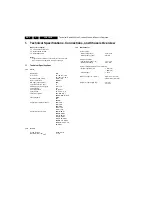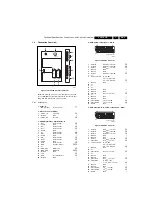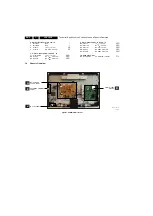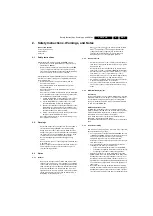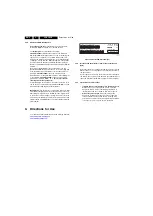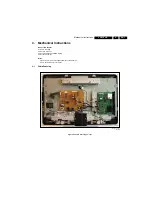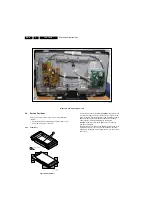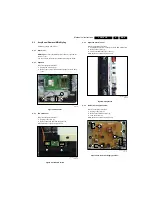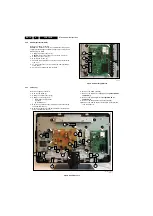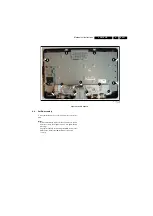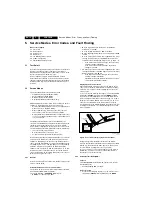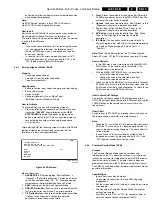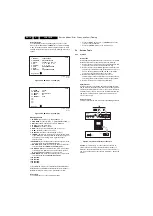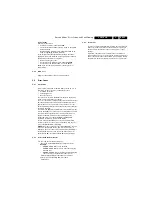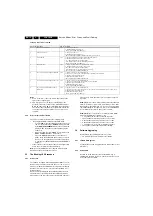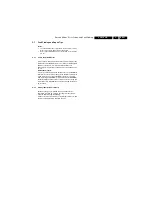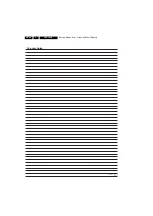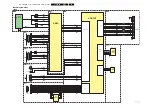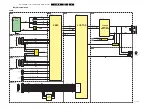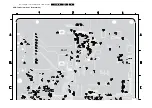
Service Modes, Error Codes, and Fault Finding
5.
How to Order
ComPair II order codes:
•
ComPair II interface: 3122 785 91020.
•
The latest ComPair software can be found on the Philips
Service website.
•
ComPair UART interface cable: 3138 188 75051 (to be
used for upgrading the Main software).
In the unlikely event that the Standby software should be
upgraded, you will be informed via the appropriate channels
(Philips Service website). To upgrade:
•
Remove backcover of set.
•
Use ComPair I
2
C interface cable: 3122 785 90004.
•
Use ComPair I
2
C adapter cable: 3139 131 03791.
Note
: If you encounter any problems, contact your local
support desk.
5.3.2
LVDS Tool
Support of the LVDS Tool has been discontinued.
5.4
Error Codes
5.4.1
Introduction
Error codes are required to indicate failures in the TV set. In
principle a unique error code is available for every:
•
Activated protection.
•
Failing I
2
C device.
•
General I
2
C error.
The last errors, stored in the NVM, are shown in the Service
menu’s. This is called the error buffer.
The error code buffer contains all errors detected since the last
time the buffer was erased. The buffer is written from left to
right. When an error occurs that is not yet in the error code
buffer, it is displayed at the left side and all other errors shift one
position to the right.
An error will be added to the buffer if this error differs from any
error in the buffer. The last found error is displayed on the left.
An error with a designated error code may never lead to a
deadlock situation. This means that it must always be
diagnosable (e.g. error buffer via OSD or blinking LED
procedure, ComPair to read from the NVM).
In case a failure identified by an error code automatically
results in other error codes (cause and effect), only the error
code of the MAIN failure is displayed.
Example:
In case of a failure of the I
2
C bus (CAUSE), the error
code for a “General I
2
C failure” and “Protection errors” is
displayed. The error code for the single devices (EFFECT) is
not displayed. All error codes are stored in the same error
buffer (TV’s NVM) except when the NVM itself is defective.
5.4.2
How to Read the Error Buffer
You can read the error buffer in 2 ways:
•
On screen via the SAM/CSM (if you have a picture).
Example:
–
ERROR: 0 0 0 0 0: No errors detected
–
ERROR: 6 0 0 0 0: Error code 6 is the last and only
detected error
–
ERROR: 9 6 0 0 0: Error code 6 was detected first and
error code 9 is the last detected (newest) error
•
Via the blinking LED procedure (when you have no
picture). See “The Blinking LED Procedure”.
•
Via ComPair.
5.4.3
Error Codes
In case of non-intermittent faults, write down the errors present
in the error buffer and clear the error buffer before you begin
the repair. This ensures that old error codes are no longer
present.
If possible, check the entire contents of the error buffer. In
some situations, an error code is only the result of another error
and not the actual cause of the problem (for example, a fault in
the protection detection circuitry can also lead to a protection).


